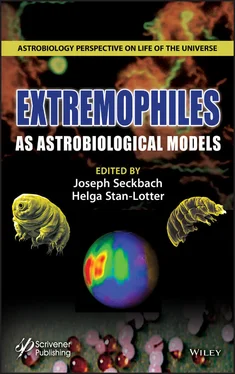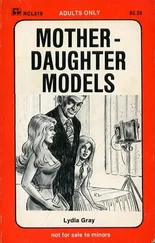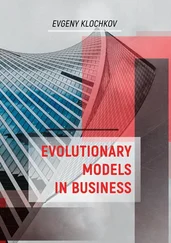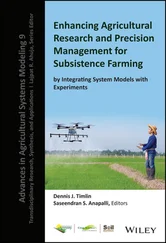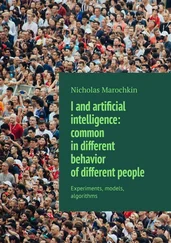386 390
387 391
388 392
389 393
Scrivener Publishing
100 Cummings Center, Suite 541J
Beverly MA, 01915-6106
Astrobiology Perspectives on Life of the Universe
Series Editors: Richard Gordon and Joseph Seckbach
In his 1687 book Principia , Isaac Newton showed how a body launched atop a tall mountain parallel to the ground would circle the Earth. Many of us are old enough to have witnessed the realization of this dream in the launch of Sputnik in 1957. Since then our ability to enter, view and understand the Universe has increased dramatically. A great race is on to discover real extraterrestrial life, and to understand our origins, whether on Earth or elsewhere. We take part of the title for this new series of books from the pioneering thoughts of Svante Arrhenius, who reviewed this quest in his 1909 book The Life of the Universe as Conceived by Man from the Earliest Ages to the Present Time . 1e volumes in Astrobiology Perspectives on Life of the Universe will each delve into an aspect of this adventure, with chapters by those who are involved in it, as well as careful observers and assessors of our progress. Guest editors are invited from time to time, and all chapters are peer-reviewed.
Publishers at Scrivener
Martin Scrivener (martin@scrivenerpublishing.com)
Phillip Carmical (pcarmical@scrivenerpublishing.com)
Extremophiles as Astrobiological Models
Edited by
Joseph Seckbach and Helga Stan-Lotter

This edition first published 2021 by John Wiley & Sons, Inc., 111 River Street, Hoboken, NJ 07030, USA and Scrivener
Publishing LLC, 100 Cummings Center, Suite 541J, Beverly, MA 01915, USA
© 2021 Scrivener Publishing LLC
For more information about Scrivener publications please visit www.scrivenerpublishing.com.
All rights reserved. No part of this publication may be reproduced, stored in a retrieval system, or transmitted, in any form or by any means, electronic, mechanical, photocopying, recording, or otherwise, except as permitted by law. Advice on how to obtain permission to reuse material from this title is available at http://www.wiley.com/go/permissions.
Wiley Global Headquarters
111 River Street, Hoboken, NJ 07030, USA
For details of our global editorial offices, customer services, and more information about Wiley products visit us at www.wiley.com.
Limit of Liability/Disclaimer of Warranty
While the publisher and authors have used their best efforts in preparing this work, they make no representations or warranties with respect to the accuracy or completeness of the contents of this work and specifically disclaim all warranties, including without limitation any implied warranties of merchant-ability or fitness for a particular purpose. No warranty may be created or extended by sales representatives, written sales materials, or promotional statements for this work. The fact that an organization, website, or product is referred to in this work as a citation and/or potential source of further information does not mean that the publisher and authors endorse the information or services the organization, website, or product may provide or recommendations it may make. This work is sold with the understanding that the publisher is not engaged in rendering professional services. The advice and strategies contained herein may not be suitable for your situation. You should consult with a specialist where appropriate. Neither the publisher nor authors shall be liable for any loss of profit or any other commercial damages, including but not limited to special, incidental, consequential, or other damages. Further, readers should be aware that websites listed in this work may have changed or disappeared between when this work was written and when it is read.
Library of Congress Cataloging-in-Publication Data
ISBN 978-1-119-59168-9
Cover image: Courtesy of the editors
Cover design and illustrations by Russell Richardson
Set in size of 11pt and Minion Pro by Manila Typesetting Company, Makati, Philippines
Printed in the USA
10 9 8 7 6 5 4 3 2 1
Life on Earth is ubiquitous, with most organisms living in so-called “normal” environments that we consider ambient habitats. Many microorganisms are known to tolerate and resist harsh and extreme external conditions; they are called extremophiles [6; 7]. Among them are Archaea, Bacteria, fungi, plants and microscopical animals, like the tardigrades. Some of these microorganisms are living at elevated pressure, such as in the depths of the oceans; some are able to tolerate extreme temperatures and pH values, desiccation or strong UV radiation. Some extremophiles may be under the stress of more than one factor, and we refer to them as polyextremophiles [8]. The severe environments most probably resemble the conditions on early Earth. Some of the extremophiles may thus be considered as “living fossils” since their environments resemble the conditions that have existed during the time when life is thought to have arisen on Earth, more than 3.8 billion years ago.
Are there any life forms outside the terrestrial regions? Why should such extremophilic organisms not also live in extraterrestrial places? If these organisms can thrive in such harsh conditions on Earth, they should be able to exist on celestial bodies with similar conditions.
The origin of life on Earth is still unknown. Life has been suggested to evolve from hot springs, geysers, ocean depths, volcanoes, etc. Some scientists think that life originated in cold environments, and suggest connections to bacteria in extremely cold territories like Antarctica or the North Pole.
Who and what is in this new book?
In 1995 the first extrasolar planet was discovered by Mayor and Queloz [4]; now that number is 4,301 [5; July 2020] and the question of whether there is life—possibly intelligent life—in space is more timely than ever.
Research is hampered by the fact that no other life-bearing planet has been found which could serve as a comparison. Or has it? The question of whether there is—or was—life on Mars, at least in the form of simple microbes, has not yet been solved unequivocally [1]. The Jovian moon Europa and the Saturnian moons Titan and Enceladus are also considered promising candidates for worlds with life [3].
This book deals with the description of extremophilic microorganisms which live in environments with similarities to those known from several planets and moons in the solar system. Also, on Earth, environmental conditions occur which are lethal or at least harmful to many organisms, but specialists nevertheless survive or even thrive under these conditions.
The first chapters ( Part I) consider extremophiles which are found in environments with possible or very likely similarities to the conditions on extrasolar planets or other celestial bodies. For example, the pH can be very low, such as 3.0, and temperatures can be high (> 90 °C), such as in volcanic steam vents or fumaroles (Bizzoco and Kelley). Using a special collector for the steam, the authors discovered a great diversity of thermophiles, which mostly belong to the Archaea.
Acidophiles are of special interest because their chemolithotropic metabolism obtains energy from reduced minerals, thus creating the extreme acidic conditions in which they thrive. An extensive geomicrobiological characterization of the Rio Tinto basin in Spain has proven the prominent role of the iron cycle in the ecosystem (Amils and Fernández-Remolar). The identification of iron sulfates and oxides on Mars, analogous to those generated in the Tinto basin by microbial metabolism, has made Rio Tinto one of the best geochemical and mineralogical terrestrial Mars analogues.
Читать дальше
